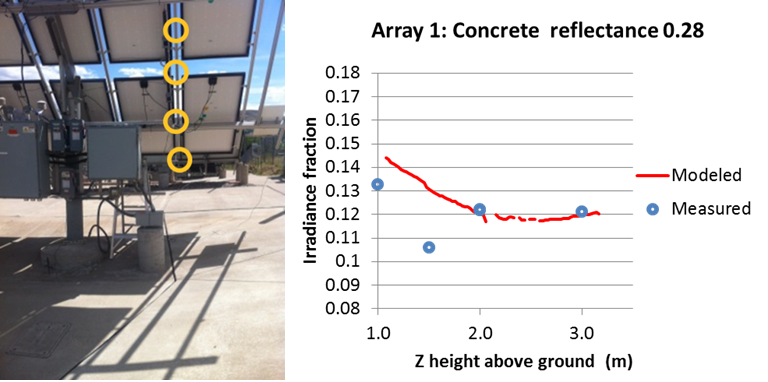Ray Tracing Work at NREL
RADIANCE is a reverse ray tracing model typically used for lighting design of buildings. This simulation tool provides physically realistic image rendering and illuminance mapping, and has been used previously for the modeling of bifacial PV installations [Lo, Lim and Rahman, 2015]. We have conducted initial validation of this modeling package by comparing modeled vs. measured backside irradiance measurements from PV test arrays.

The RADIANCE ray tracing model package has been used to conduct sensitivity analyses in the study of proposed back-side irradiance standards. For instance, the impact of module height off the ground, irradiance nonuniformity due to surrounding modules, and the effect of increased cell spacing (below) have been studied so far.

RADIANCE simulation showing the effect of increased cell spacing in a module. At a lower deployment height (0.5 m) the impact on backside irradiance is greater. At heights of 1m or above, increased cell spacing does not have as large an effect on backside irradiance.